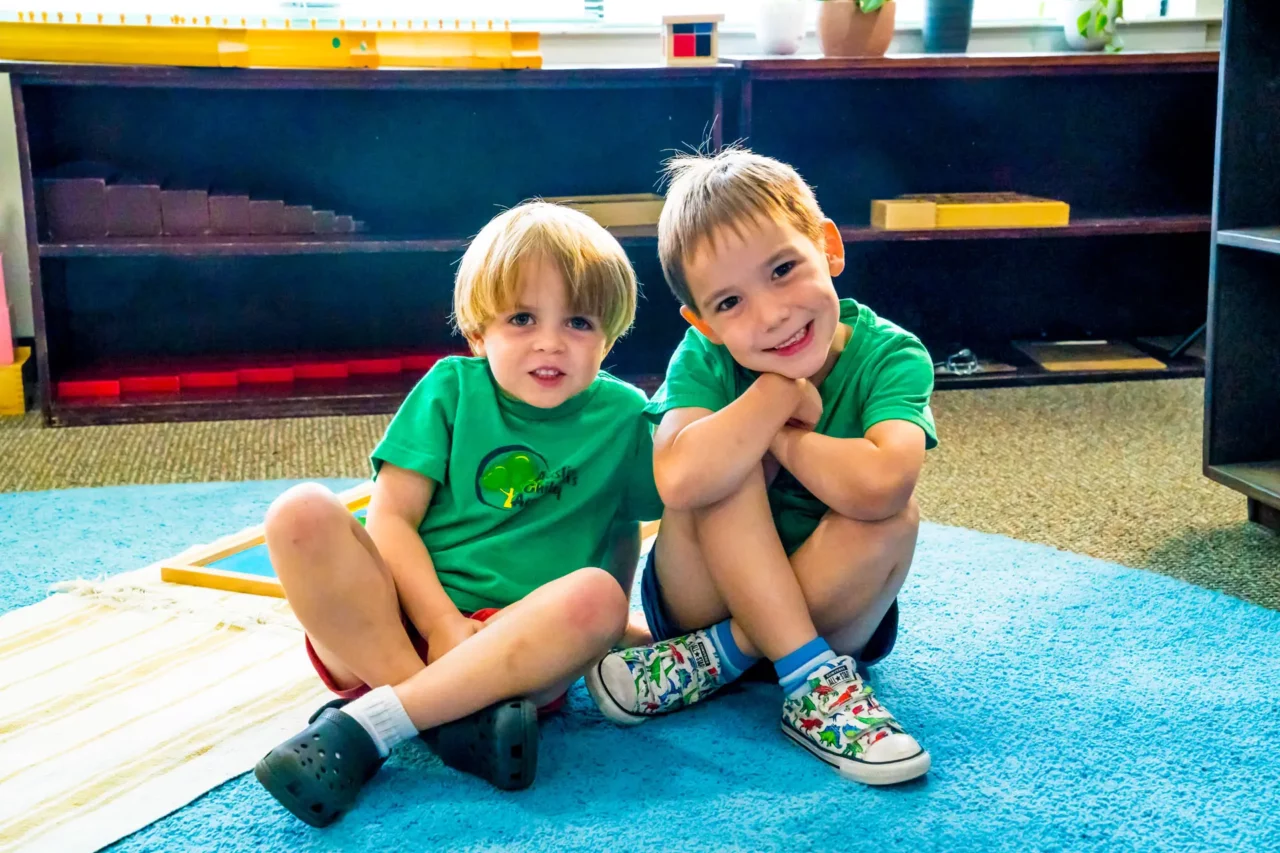
Dr. Montessori once said that a teacher’s greatest success is when “the children are now working as if I (the teacher) did not exist.” This may sound odd to those who were raised in classrooms with rows of seats, in schools whose methods focused on drills, tests, and unbending structure. But Dr. Montessori’s methods were meant to organically progress intellectual and social development. The result of her methods is a wonder to behold.
Dr. Marie Montessori called this vital goal “normalization.”
What, Exactly, Is “Normalization”?
“Normalization” can sound rather alarming to 21st century ears, but the definition of the term is about as far from “conformity” or any superimposition of behavior as it could possibly be.
Normalization is when children are freely choosing the tasks they wish to work on and do that work with concentration and joy, in harmony and often in cooperation with those around them. It’s a positive process, a blossoming of the natural child, who embraces purposeful learning, takes delight in peaceful coexistence, and discovers, in the process, an inner confidence and contentedness.
Dr. Montessori called this state of childhood bliss “the single most important result of the Montessori method.”
Characteristics Of A Montessori “Normalized” Child
There are four general characteristics that define a Montessori student who has reached this goal.
- Love Of Learning. A Montessori student is encouraged to follow his or her own interests in the classroom so that learning becomes a joy, not a chore.
- Focus. A Montessori student is not daunted by failure, for he or she has learned that only through experimentation and effort can one master a new skill.
- Self-discipline. A Montessori student has learned patience, communication skills, and self-control.
- Social Skills. Montessori students work well with others, show respect, and enjoy a peaceful, ordered community.
How Does Normalization Manifest?
Teachers and parents witness this state of calm and bliss everyday in the Montessori classroom. This growth of character and personality reveals itself in a three-step cycle.
- Preparation. The child gathers what he or she needs to start the work of the day, a time of choice and negotiation with others.
- Work. The child focuses on what he or she wishes to do, diving deep into a happy state of concentrated learning.
- Rest. Once the work is done, the child returns everything to its place, sociably chatting with other students, feeling satisfied at his accomplishment.
Dedicated educators of the Montessori method strive to set every one of their students on this path.





